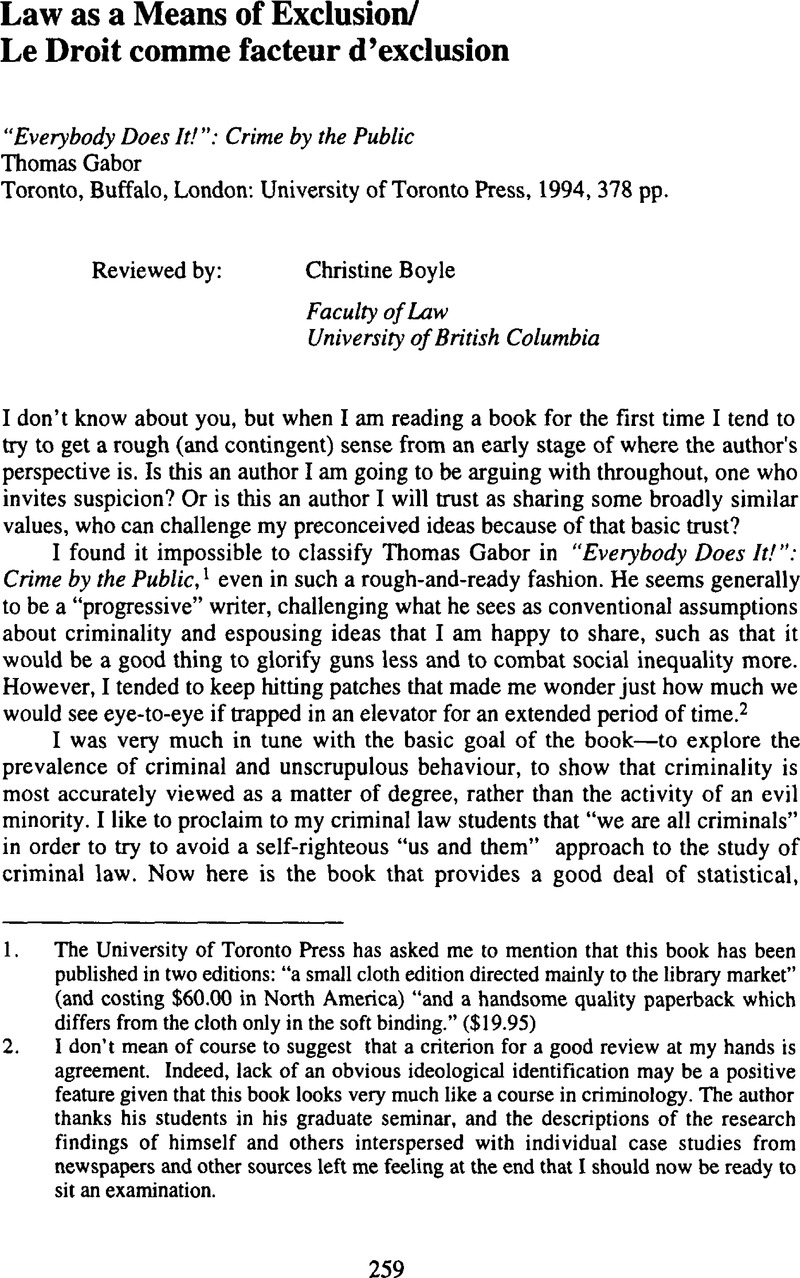No CrossRef data available.
Article contents
Law as a Means of Exclusion/Le Droit comme facteur d'exclusion - “Everybody Does It!”: Crime by the PublicThomas Gabor, Toronto, Buffalo, London: University of Toronto Press, 1994, 378 pp.
Published online by Cambridge University Press: 18 July 2014
Abstract

- Type
- Reviews/Recensions
- Information
- Canadian Journal of Law and Society / La Revue Canadienne Droit et Société , Volume 11 , Issue 2 , Fall/automne 1996 , pp. 259 - 262
- Copyright
- Copyright © Canadian Law and Society Association 1996
References
1. The University of Toronto Press has asked me to mention that this book has been published in two editions: “a small cloth edition directed mainly to the library market” (and costing $60.00 in North America) “and a handsome quality paperback which differs from the cloth only in the soft binding.” ($19.95)
2. I don't mean of course to suggest that a criterion for a good review at my hands is agreement. Indeed, lack of an obvious ideological identification may be a positive feature given that this book looks very much like a course in criminology. The author thanks his students in his graduate seminar, and the descriptions of the research findings of himself and others interspersed with individual case studies from newspapers and other sources left me feeling at the end that I should now be ready to sit an examination.
3. See e.g. Wells, Celia, “Corporate Manslaughter: A Cultural and Legal Form” (1995) 6 Criminal Law Forum 45.CrossRefGoogle Scholar
4. Oddly, the author cites a secondary source rather than Kohlberg himself, which might help to explain why he shows no awareness that Kohlberg was working with male subjects and that the application of his theory to women and girls has been questioned. This could be seen as an example of a tendency to overgeneralize. Another could be the assertion (at 174) that “[a]ll categories of offenders… use some fairly standard justifications for their actions.” Is this generally true, for example, of battered women who kill their partners? Might there not be cultural variations in willingness to take responsibility for one's actions?




